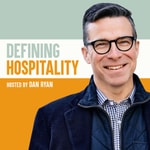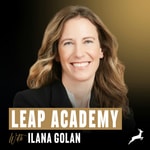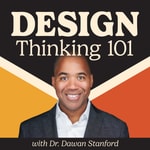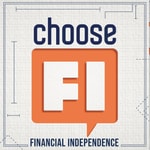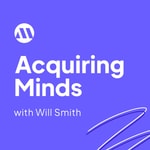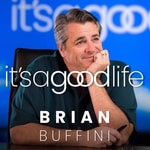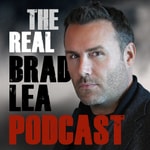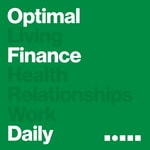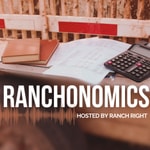The Finest City – Détails, épisodes et analyse
Détails du podcast
Informations techniques et générales issues du flux RSS du podcast.
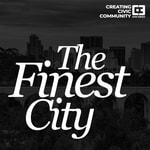
The Finest City
Citizens Coordinate for Century 3
Fréquence : 1 épisode/22j. Total Éps: 67

Classements récents
Dernières positions dans les classements Apple Podcasts et Spotify.
Apple Podcasts
🇺🇸 États-Unis - design
31/07/2025#94🇺🇸 États-Unis - design
05/04/2025#92🇺🇸 États-Unis - design
28/03/2025#79🇺🇸 États-Unis - design
27/03/2025#70🇺🇸 États-Unis - design
26/03/2025#76🇺🇸 États-Unis - design
31/12/2024#86
Spotify
Aucun classement récent disponible
Liens partagés entre épisodes et podcasts
Liens présents dans les descriptions d'épisodes et autres podcasts les utilisant également.
See all- http://c3sandiego.org/
87 partages
- https://www.noaa.gov/
52 partages
- https://www.surfrider.org/
46 partages
Qualité et score du flux RSS
Évaluation technique de la qualité et de la structure du flux RSS.
See allScore global : 69%
Historique des publications
Répartition mensuelle des publications d'épisodes au fil des années.
San Diego’s Innovative Fisherman’s Market Bringing Local, Sustainable Seafood — Pete Halmay, Tuna Harbor Dockside Market and San Diego Fisherman’s Working Group
vendredi 26 juillet 2024 • Durée 18:54
This episode features Pete Halmay, President of San Diego Fisherman’s Working Group and one of the founders of the Tuna Harbor Dockside Market. With over 50 years of commercial fishing experience, Pete shares fascinating insights into the challenges of creating a fisherman’s market, the diverse array of seafood available, and the cultural significance of maintaining a working fishing harbor in San Diego. He discusses the fluctuations in sea life over time, the importance of water quality, and how the market has become a window into the life of local fishermen. Pete also touches on the environmental considerations for fishing boats and the creative solutions for managing supply and demand in the market.
Timestamps:
[1:34] Pete talks about the Tuna Harbor Dockside Market, which is not a farmer’s market but a fisherman’s market.
[5:45] The Pacific To Plate bill, which allows fishermen’s markets to operate as food facilities.
[06:28] The diverse customer base and unique experiences at the market.
[09:15] The market’s role in maintaining San Diego’s working fishing harbor.
[11:14] Changes in sea life over time and the importance of having a long-term perspective.
[12:39] The significance of water quality and sustainable fishery management.
[14:47] Environmental considerations for fishing boats.
[14:36] When you buy local, your fish has fewer miles on it.
[16:06] Managing supply and demand at the fish market, and how they make sure to give back to the community.
About C-3
Even before the California Coastal Commission or Environmental Protection Agency existed, Citizens Coordinate for Century 3 (C-3) was the environmental conscience of San Diego. Since that time, in part due to C-3’s leadership in education, advocacy, and empowerment, a plethora of organizations have developed throughout San Diego County. These organizations specifically focus on promoting progressive values in architecture, urban design, land-use governance, natural resource management, sustainable economic development, climate change resilience, and social justice. As the field of allies has grown, C-3’s role has evolved to provide a platform that promotes creating civic community.
Opportunities for Advocacy and Engagement:
Quotes:
-
“We thought at the beginning that it would be a way to just make a little bit more money than selling directly, but what we found out is that we’re selling fishing, not fish. We’re showing people a window into the life of a fisherman and the ocean around them.” — Pete [3:15]
-
“This market is important because it activates the waterfront.” — Pete [9:15]
-
“Water quality is probably the most important thing. If the water quality is poor, things die.” — Pete [12:55]
-
“I say, you come to the market, and the fish has zero miles on it.” — Pete [14:36]
-
“If you buy locally, you benefit the planet, so how can you go wrong?” — Pete [18:17]
Blue Technologies and Why San Diego Should be the Blue Finance Capital of the World
vendredi 12 juillet 2024 • Durée 27:52
This episode features Greg Murphy from Fugro, a world leader in providing geo-data consulting through mapping, modeling, and monitoring information about our planet and the structures built upon it. Greg is also Vice Chair on the Board at the San Diego Maritime Museum. In the conversation, Greg talks about the innovative future of blue technologies, the importance of ocean sustainability, and San Diego's potential as a blue finance capital. He discusses the concept of blue carbon, the Port of San Diego’s proactive approach to sea level rise, and exciting developments in the local blue tech industry such as offshore wind energy and cell-cultured seafood. Greg also shares insights from the International Conference on Small Island Developing States and emphasizes the importance of nature-based solutions for coastal resilience.
Timestamps:
[2:13] Greg discusses his background in the blue economy and involvement with the San Diego Maritime Museum and its importance in preserving maritime history.
[7:07] Overview of Fugro’s work and why it’s relevant to coastal resilience worldwide.
[7:37] Fugro is the world’s leading geo-data specialist.
[9:01] How Fugro supports the energy transition and creates a safe-liveable world using data.
[10:01] How is the San Diego Bay looking when it comes to sea level rise?
[12:20] Greg defines blue carbon and its importance in coastal ecosystems and climate change mitigation.
[15:31] Why San Diego should become the blue finance capital of the world.
[17:19] Why do we need blue finance?
[18:24] How the Port of San Diego has supported blue tech so far.
[20:00] Highlights of exciting developments in San Diego’s blue tech industry, including offshore wind and cell-cultured seafood.
[25:08] Oceanside’s innovative “re-beach” program to address beach erosion.
[26:47] The importance of resilience at the government level.
About C-3
Even before the California Coastal Commission or Environmental Protection Agency existed, Citizens Coordinate for Century 3 (C-3) was the environmental conscience of San Diego. Since that time, in part due to C-3’s leadership in education, advocacy, and empowerment, a plethora of organizations have developed throughout San Diego County. These organizations specifically focus on promoting progressive values in architecture, urban design, land-use governance, natural resource management, sustainable economic development, climate change resilience, and social justice. As the field of allies has grown, C-3’s role has evolved to provide a platform that promotes creating civic community.
Opportunities for Advocacy and Engagement:
Quotes:
-
“I love the Maritime Museum of San Diego. The people and the culture of the organization are really what drew me in. The museum is unlike most museums, where we celebrate the everyday citizen.” — Greg [4:47]
-
“For me, maritime history is human history. Many of us have a story, but it’s also about the history of technology.” — Greg [5:51]
-
“Maritime history is embedded into who we are as a people and who we are as a planet.” — Greg [6:33]
-
“Our mission is to create a safe, livable world using data.” — Greg [10:02]
-
“This whole idea of blue carbon is about converting these nature-based systems into bankable opportunities.” — Greg [15:38]
-
“Get out in nature! Take a hike. Experience the beauty that we have around us here in San Diego. Visit the Maritime Museum. I think that’s one way we can all build resilience for ourselves.” — Greg [27:13]
The Importance of Border Connectivity and Collaboration — Borders Program Manager for SANDAG — Hector Vanegas
vendredi 26 janvier 2024 • Durée 36:49
This episode focuses on the importance of the cross-border relationship with guest Hector Vanegas, SANDAG’s Borders Program Manager. Hector first outlines SANDAG’s role in coordinating cross-border transportation projects and traces his career path working in binational affairs from the Mexican Consulate to his current position at SANDAG. Hector emphasizes the economic interdependence between San Diego and Baja, and how we can increase civic participation in regional planning through initiatives like the Border Connectivity Project and the World Design Capital designation. At the end of the episode, Hector discusses how we can help reshape perceptions of the US-Mexico cross-border regions and why we need to have a sense of pride and reverence for our shared history.
Timestamps:
[2:49] Hector talks about his academic formation and career path before SANDAG, including work as an attorney in Mexico, working at the Mexican Consulate in San Diego, and studying human rights at the International Institute of Human Rights in Strasbourg, France.
[4:17] What led Hector to the border region?
[6:06] How does SANDAG geographically define the San Diego/Tijuana region, and why?
[6:44] SANDAG’s work addresses many issues beyond the San Diego/Tijuana border.
[9:35] Hector discusses the IRP, Interregional Partnership.
[10:53] The complexity of working with the borders and the need for cooperation across multiple agencies.
[11:02] How SANDAG works to foster collaboration.
[13:14] How important our relationship with Northern Baja is to maintaining California’s large economy.
[15:18] Mexico is now going to be the largest trading partner of the United States, surpassing China, and representing almost 16% of our international trade.
[15:38] The importance of remembering the shared history between Mexico and San Diego.
[17:18] A few takeaways from the Impacts of Border Delays at California, Baja California Land Ports of Entry study.
[22:28] As SANDAG looks for new leadership, Hector shares his thoughts on how the agency may increase its impact on the U.S./Mexico border region.
[27:24] SANDAG created the borders committee at a policy level as one of the four Policy Advisory Committees, of which there are now six.
[28:18] The opportunities to increase civic engagement and visionary dialogue in the World Design Capital and the Advancing Border Connectivity Project.
[35:17] San Diego was recognized as an inspirational model of regional collaboration by the UN.
About C-3
Even before the California Coastal Commission or Environmental Protection Agency existed, Citizens Coordinate for Century 3 (C-3) was the environmental conscience of San Diego. Since that time, in part due to C-3’s leadership in education, advocacy, and empowerment, a plethora of organizations have developed throughout San Diego County. These organizations specifically focus on promoting progressive values in architecture, urban design, land-use governance, natural resource management, sustainable economic development, climate change resilience, and social justice. As the field of allies has grown, C-3’s role has evolved to provide a platform that promotes creating civic community.
Opportunities for Advocacy and Engagement:
A Spotlight on Design Driven Stories — CEO of World Design 2024 San Diego — Tijuana, Carlos de la Mora
vendredi 12 janvier 2024 • Durée 25:24
This episode features Carlos de la Mora, immediate-past CEO of World Design Capital 2024, San Diego-Tijuana. Carlos brings a rich and varied professional background to the table, including his previous experience as the Executive Director for the Urban Land Institute in Mexico and Director of Land Development at CBRE. Throughout the conversation, Carlos talks about the intention of purpose and legacy behind the World Design programming, along with a few of the activations and installations he is looking forward to. He shares more about welcoming all types of design into the fold, a little glimpse into the “secret sauce” of his leadership, and how this opportunity can help us improve cross-border relations.
Timestamps:
[1:47] Carlos shares his nonlinear career path, including architecture school, art exhibits, video production, and working in the Baja wine industry.
[4:30] What unique responsibility does the World Design Capital selection bring?
[4:48] San Diego-Tijuana is the first cross-border region to be designated as a World Design Capital.
[5:12] Using this time also to celebrate the 50th Anniversary of Temporary Paradise.
[6:24] A few of the partners that worked to bring the concept to life, including the UCSD Design Lab.
[9:36] What is the “secret sauce” that Carlos feels he adds to the mix?
[10:38] How not only city design, but design in many other aspects, will be featured in 2024 programming. All expressions of design are welcome.
[11:37] A few of the installations and activations that Carlos is looking forward to at the border during WDC, including one by artist Chico MacMurtrie called “Border Crossers.”
[15:36] WDC helps provide visibility and opportunities for connection, and it’s important to use it to advance important community issues.
[17:40] What kind of lasting impact does Carlos hope the World Design Capital will have on our region and cross-border relations?
[18:21] Learning and gathering inspiration from other World Design cities.
[22:28] Ways to get involved in the World Design Capital.
About C-3
Even before the California Coastal Commission or Environmental Protection Agency existed, Citizens Coordinate for Century 3 (C-3) was the environmental conscience of San Diego. Since that time, in part due to C-3’s leadership in education, advocacy, and empowerment, a plethora of organizations have developed throughout San Diego County. These organizations specifically focus on promoting progressive values in architecture, urban design, land-use governance, natural resource management, sustainable economic development, climate change resilience, and social justice. As the field of allies has grown, C-3’s role has evolved to provide a platform that promotes creating civic community.
Opportunities for Advocacy and Engagement:
Design Innovation in Our Transfrontier Metropolis — Author, Podcaster, Design Scholar, and Lecturer at UC San Diego, Larry Herzog
vendredi 15 décembre 2023 • Durée 39:40
This episode features an informative and inspiring conversation with Larry Herzog, a Design Scholar-in-Residence at the UC San Diego Design Lab, and a lecturer in the Department of Urban Studies and Planning at UCSD. Larry is also a writer and Professor Emeritus of City Planning in the School of Public Affairs at San Diego State University. Larry is the author or editor of 11 books on urban planning, design, and cross-border development. In the episode, Larry talks about San Diego and Tijuana as a shared ecosystem, the obstacles that still prove to be challenging in urban planning, and ideas to make border crossing a safer and more enjoyable place for all who visit and live in our area.
Timestamps:
[3:42] Larry has been involved in various community organizations and initiatives, writing Op-Ed essays and hosting a podcast called Whose City?
[4:10] Larry’s Whose City? podcast is intended for San Diego residents to feel invested in their community and to provide a platform for debating and discussing important issues affecting the city’s future.
[6:50] Larry defines the term “transfrontier metropolis” or TFM.
[12:05] The San Diego and Tijuana communities are a shared ecosystem and functional system, but there are certain obstacles to urban planning, including different political systems, laws, and power dynamics.
[17:18] A few of the highlights from Larry’s book, From Aztec to High Tech.
[19:45] The connection between food and public space in Tijuana, and how they model their community in a similar way to San Diego.
[25:33] Keeping the balance between the expression of local culture and building for tourism.
[28:16] The failure of modern suburbs in Mexico throughout the 1990’s and 2000’s and what we learned.
[30:21] Ideas for improving the border crossing experience.
[34:10] Why Larry believes border crossing should be like air travel in the United States.
[35:27] Larry discusses the World Design Capital in 2024 and the great opportunity we have to showcase San Diego and Tijuana’s laboratory for global urbanization.
About C-3
Even before the California Coastal Commission or Environmental Protection Agency existed, Citizens Coordinate for Century 3 (C-3) was the environmental conscience of San Diego. Since that time, in part due to C-3’s leadership in education, advocacy, and empowerment, a plethora of organizations have developed throughout San Diego County. These organizations specifically focus on promoting progressive values in architecture, urban design, land-use governance, natural resource management, sustainable economic development, climate change resilience, and social justice. As the field of allies has grown, C-3’s role has evolved to provide a platform that promotes creating civic community.
Opportunities for Advocacy and Engagement:
Quotes:
-
“I think it’s really important that academia gets involved in the making of public policy.” — Larry [2:35]
-
“My argument is that we have to break the mold of thinking of the border crossing area, the frontier zone, if you want to call it that, as an institutionalized, militarized space. I think you have to have more of a balance as you’re crossing the border.” — Larry [32:50]
-
“I think one of the goals of the World Design Capital is to not just talk about design and not just to have parties and have fun, but to do something that actually lasts.” — Larry [35:05]
-
“The project and the results are only as good as the participants.” — Larry [36:52]
-
“This region is such an important region that the world should know about us, and here they are. They are coming in and recognizing us, and we have this great opportunity to showcase what we can do here and that San Diego / Tijuana is a laboratory for global urbanization.” — Larry [38:24]
Civic Border Dialogue and Engagement that Leads To Real Solutions — Executive Director and Co-Founder of WILDCOAST, Serge Dedina
vendredi 1 décembre 2023 • Durée 30:10
This episode features Serge Dedina, the executive director and co-founder of WILDCOAST, an international conservation team. Not only did Serge serve as the mayor of Imperial Beach from 2014 to 2022, but he also chaired the SANDAG borders committee for six years, demonstrating his commitment to cross-border collaboration. With a focus on transboundary planning and conservation, Serge has been a key player in addressing the cross-border sewage pollution crisis in the San Diego-Tijuana region. In the conversation, Serge shares insights into the crucial role of cross-border collaboration in addressing sea-level change and the importance of getting involved and making a difference at the local level.
Timestamps:
[2:01] WILDCOAST is an international conservation team that conserves coastal and marine ecosystems and addresses natural climate change through natural solutions.
[2:10] Serge’s journey of co-founding WILDCOAST and his history of serving as the Mayor of Imperial Beach from 2014 to 2022.
[2:47] What does Serge hope to achieve in the role as Chair for C-3’s Knowledge Action Network, and what hopes does he have for future civic awareness of our border region?
[6:20] The border region can serve as a laboratory to get things done because there are no rules and we can take action and make up the rules to serve our community best as we go.
[6:20] Serge discusses shifting the conversation away from thought partners to action partners and the punk rock DIY philosophy that helped him transform the city of Imperial Beach.
[9:19] Serge talks about serving on the board of SANDAG and how cross-border collaboration has evolved on a government level.
[11:22] By working with the media to communicate issues, problems, challenges, and needs, Serge has caught the attention of CNN and many other national and international media organizations.
[13:43] How can we do better in solving the Tijuana sewage crisis and improving our water quality?
[14:15] What would solving this issue mean for our South Bay communities and our neighbors in Tijuana?
[19:31] The impact of our sea levels rising and holding the fossil fuel companies accountable.
[29:05] The importance of taking positive actions at the micro level.
[29:39] Instead of just tweeting and talking about things on social media, get off your device and get involved. Get active.
About C-3
Even before the California Coastal Commission or Environmental Protection Agency existed, Citizens Coordinate for Century 3 (C-3) was the environmental conscience of San Diego. Since that time, in part due to C-3’s leadership in education, advocacy, and empowerment, a plethora of organizations have developed throughout San Diego County. These organizations specifically focus on promoting progressive values in architecture, urban design, land-use governance, natural resource management, sustainable economic development, climate change resilience, and social justice. As the field of allies has grown, C-3’s role has evolved to provide a platform that promotes creating civic community.
Opportunities for Advocacy and Engagement:
Merging Science and Service with Community — Dr. Megan Jennings, Conservation Ecologist and Co-Director of SDSU’s Institute for Ecological Monitoring and Management
vendredi 10 novembre 2023 • Durée 44:15
In this episode, we welcome Dr. Megan Jennings, a Conservation Ecologist and Co-Director of San Diego State University’s Institute for Ecological Monitoring and Management. As a research scientist at SDSU, Megan is based in the biology department and a co-champion for a new initiative at San Diego State, the Community Climate Action Network. In the conversation, Megan talks about the main issues facing San Diego’s backcountry, and the importance of collaboration between academic science, indigenous communities, and a wide array of disciplines in addressing climate change, highlighting the need for mutual respect and knowledge sharing.
Timestamps:
[2:23] When and why did SDSU create the Institute for Ecological Monitoring and Management?
[4:07] What are the problems that are increasing with climate change in San Diego’s backcountry?
[6:54] Working with the Climate Science Alliance to create a climate-informed conservation strategy to protect and preserve Southern California’s forests.
[10:10] What we can learn from fire-scarred dendrochronology, the recreation of fire history.
[13:52] Megan talks about learning the hard lesson of stopping new builds in high-fire-risk areas.
[15:20] Getting to the ultimate goal of restoring the good fire is the goal of many indigenous partners.
[17:30] The involvement of tribal nations in changing the collective attitude towards our interaction with the land and its flora and fauna.
[23:40] Once the fire has passed, can we restore our way out of habitat destruction?
[29:47] Chaparral and carbon dynamics.
[32:13] Carbon storage and sequestration in San Diego’s natural landscapes.
[39:56] Where can someone go for more resources and to get involved?
About C-3
Even before the California Coastal Commission or Environmental Protection Agency existed, Citizens Coordinate for Century 3 (C-3) was the environmental conscience of San Diego. Since that time, in part due to C-3’s leadership in education, advocacy, and empowerment, a plethora of organizations have developed throughout San Diego County. These organizations specifically focus on promoting progressive values in architecture, urban design, land-use governance, natural resource management, sustainable economic development, climate change resilience, and social justice. As the field of allies has grown, C-3’s role has evolved to provide a platform that promotes creating civic community.
Opportunities for Advocacy and Engagement:
Institute for Ecological Monitoring and Management
Quotes:
-
“The biggest problem that our country faces is not climate change per se, but a land use change.” — Megan [4:03]
-
“I think it all connects back to the synergistic relationship between the impacts that people and our development have in and of itself and then having climate change layered on top above all of that” — Megan [4:49]
-
“Drought and wildfire are the two concerns I have about what we’re seeing in terms of the most pressing changes.” — Megan [5:37]
-
“We have a strong partnership in merging science and service with the community.” — Megan [6:09]
-
“Science without direction doesn’t really have a place to go.” — Megan [7:42]
-
“There’s a lot to be learned from the original stories of these landscapes that we haven’t been listening to.” — Megan [18:17]
-
“The great thing about collaborating with people from different perspectives is you can do more, you can see more things, and you can take different approaches to things.” — Megan [22:44]
-
“I understand what it’s like to need science and want to have somebody help provide it.” — Megan [35:59]
-
“The more we have these connections, the better off we all are in trying to face the challenges that are in front of us.” — Megan [39:03]
Transformational Adaptation and the Backcountry with Amber Pairis of the Climate Science Alliance
vendredi 27 octobre 2023 • Durée 42:23
In this episode, we welcome Amber Pairis, the founder and lead advisor of Climate Science Alliance. Amber’s work is dedicated to increasing awareness of climate change impacts, advocating for solutions, and fostering collective action to protect both natural and human communities in the face of a changing climate. During the conversation, Amber sheds light on the Alliance’s commitment to honoring indigenous stewardship and building an inclusive community of partners, ensuring everyone has a seat at the table.
Amber also explores the vital role of agriculture in climate solutions and shares the milestones worth celebrating in the realm of climate advocacy. She talks about the Alliance’s inspiring initiatives, including Climate Kids and the Stewardship Pathways Training Program, that are paving the way for a brighter and more sustainable future.
Timestamps:
[1:46] Amber introduces herself and more about her role at the Climate Science Alliance.
[5:24] How the Alliance formed, the funding and building of the team.
[7:37] At the Alliance, the topics pivot and change based on what their partners need.
[8:50] What transformational adaptation means for the Alliance and how it is the center of the community.
[11:02] How the Alliance creates a space that truly listens to people and upholds value for those of many different backgrounds and perspectives.
[15:53] The birth of Climate Kids and the focus to take hands-on science and bring it to create a focus on storytelling and climate literacy.
[19:08] What do we have to celebrate, and what was some good news coming out of the San Diego Climate Summit?
[27:08] How the Climate Summit has engaged with San Diego’s indigenous population and history, and more about the tribal work groups.
[30:34] How can agriculture play a role in climate solutions?
[32:21] The cross-border collaboration between the Alliance and Baja California.
[35:42] More about the Stewardship Pathways Training program.
[40:01] Where can people give and learn more?
About C-3
Even before the California Coastal Commission or Environmental Protection Agency existed, Citizens Coordinate for Century 3 (C-3) was the environmental conscience of San Diego. Since that time, in part due to C-3’s leadership in education, advocacy, and empowerment, a plethora of organizations have developed throughout San Diego County. These organizations specifically focus on promoting progressive values in architecture, urban design, land-use governance, natural resource management, sustainable economic development, climate change resilience, and social justice. As the field of allies has grown, C-3’s role has evolved to provide a platform that promotes creating civic community.
Opportunities for Advocacy and Engagement:
The Power of The Community Process and Articulating Your Vision with Frank Wolden
vendredi 13 octobre 2023 • Durée 01:24:36
In this engaging oral history episode, we have a visit from Frank Wolden, a prominent figure in the realm of urban design and architecture. Frank shares his journey from his upbringing in San Diego to his deep involvement in shaping the vision of downtown redevelopment. He discusses the fascinating gap between the planning and execution of urban spaces and the art of selling the concept of responsible design with thoughtful thinking.
Frank takes us through his extensive involvement in creating the vision for downtown and its redevelopment through his work as a city planner and with the Centre City Development Corporation. He provides valuable insights into academic and higher-level professional viewpoints of urban planning, highlighting the similarities between how it shouldn’t be done and the way it is done today.
Frank explores the significance of articulating one’s vision and embracing change, as well as the accessibility of design and the importance of passing down our value system to the next generation.
Timestamps:
[1:50] Frank gives a brief background on his professional education and upbringing in San Diego.
[3:24] How Frank found his way into urban design and architecture.
[6:26] Centre City Development Corporation and how they set up the planning and visionary process for redevelopment in the late ’70s with the centerpiece being Horton Plaza.
[7:25] How Frank’s interest in art and sculpture evolved into city building.
[11:00] The concept of growth management and how it was evolving.
[14:50] The Centre City program was the heart of growth management.
[15:35] Background on Centre City Development Coordination.
[18:21] Building out a space in the Spreckels building and how they got the funding.
[19:33] Hallmarks of downtown redevelopment and what it did for the downtown community.
[20:55] Horton Plaza was the central project that was supposed to be the heart of how redevelopment would occur and would actually catalyze all the other redevelopment.
[25:44] The biggest two things that influenced the Horton.
[27:47] Gaslamp and how it came to be revitalized.
[31:07] Creating the gateway Gaslamp to serve the convention center and ballpark.
[36:00] The urban experience of downtown during the ’90, and how it compares to today.
[43:45] Why was it timely and necessary to revisit Temporary Paradise in a contemporary framework?
[47:04] Why it’s important to have a qualitative voice in the planning perspective rather than focusing on policy and regulation.
[49:15] Urban Treasure.
[58:55] The Sports Arena submittal and the vision that it started with.
[1:00:53] Frank’s association with C-3.
[1:05:07] The need for proactive action and how we can get better at the visioning process.
[1:11:03] What issues should the next generation be focused on?
[1:22:06] The power of community process.
About C-3
Even before the California Coastal Commission or Environmental Protection Agency existed, Citizens Coordinate for Century 3 (C-3) was the environmental conscience of San Diego. Since that time, in part due to C-3’s leadership in education, advocacy, and empowerment, a plethora of organizations have developed throughout San Diego County. These organizations specifically focus on promoting progressive values in architecture, urban design, land-use governance, natural resource management, sustainable economic development, climate change resilience, and social justice. As the field of allies has grown, C-3’s role has evolved to provide a platform that promotes creating civic community.
Opportunities for Advocacy and Engagement:
Centre City Development Coordination
Applying Scientific Rigor to Stewardship: Eric Jones of the Volcan Mountain Foundation
vendredi 29 septembre 2023 • Durée 28:33
It’s all about Volcan Mountain this week, with insight from guest Eric Jones, the President and Executive Director of the Volcan Mountain Foundation. Eric discusses the Foundation’s innovative forest management strategies and its dedication to environmental education. He talks with Jennifer about how the organization preserves the mountain range through diverse ownership categories, its long-term planning efforts, and its unwavering vigilance in safeguarding this natural wonder. Eric shares how climate change has changed the conversation, and resources for those looking to actively participate in the stewardship of the mountain range and get their hands dirty in the pursuit of conservation.
Timestamps:
[2:48] How and why did the Volcan Mountain Foundation form, and what are the mountain ranges that it protects?
[5:57] How the Foundation develops the younger generation of nature lovers and stewards of the land.
[7:33] What does Eric mean by providing scientific rigor to stewardship, and what are the Foundation’s plans for the future?
[9:06] How the Foundation is working to build implementation capability and relationships with indigenous communities to inform land management practices.
[10:26] How James Hubbell has contributed to Volcan Mountain.
[11:33] The Rubenson Residency for Art and Science is an annual competitive program where scientists and artists apply for the opportunity to spend several weeks up in the mountains and be inspired by what they see.
[14:02] A few of the various ownership categories and dedication to keep all communities involved.
[18:42] The Volcan Mountains are one of the last places in San Diego that support animals like the mountain lion and smaller rare animals like the western spotted skunk. How is the future looking for the species that call San Diego their home?
[21:59] How has the landscape level of conservation shifted due to climate change?
[24:32] How is the conservation community in the backcountry responding to the Foundation’s approach, and how do solar and wind farm developments factor into the mix?
[26:03] A few of the many ways one can get involved with the Foundation: stewardship, volunteer opportunities, education programs, or financial contribution.
[27:12] The Foundation has a healthy K-12 Education program, adult education program, Wild Crafting, and Forest Bathing.
About C-3
Even before the California Coastal Commission or Environmental Protection Agency existed, Citizens Coordinate for Century 3 (C-3) was the environmental conscience of San Diego. Since that time, in part due to C-3’s leadership in education, advocacy, and empowerment, a plethora of organizations have developed throughout San Diego County. These organizations specifically focus on promoting progressive values in architecture, urban design, land-use governance, natural resource management, sustainable economic development, climate change resilience, and social justice. As the field of allies has grown, C-3’s role has evolved to provide a platform that promotes creating civic community.
Opportunities for Advocacy and Engagement:
Rubenson Endowment for Art and Science
